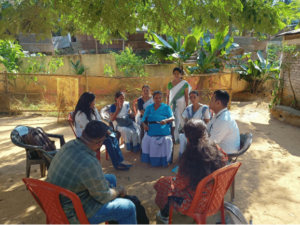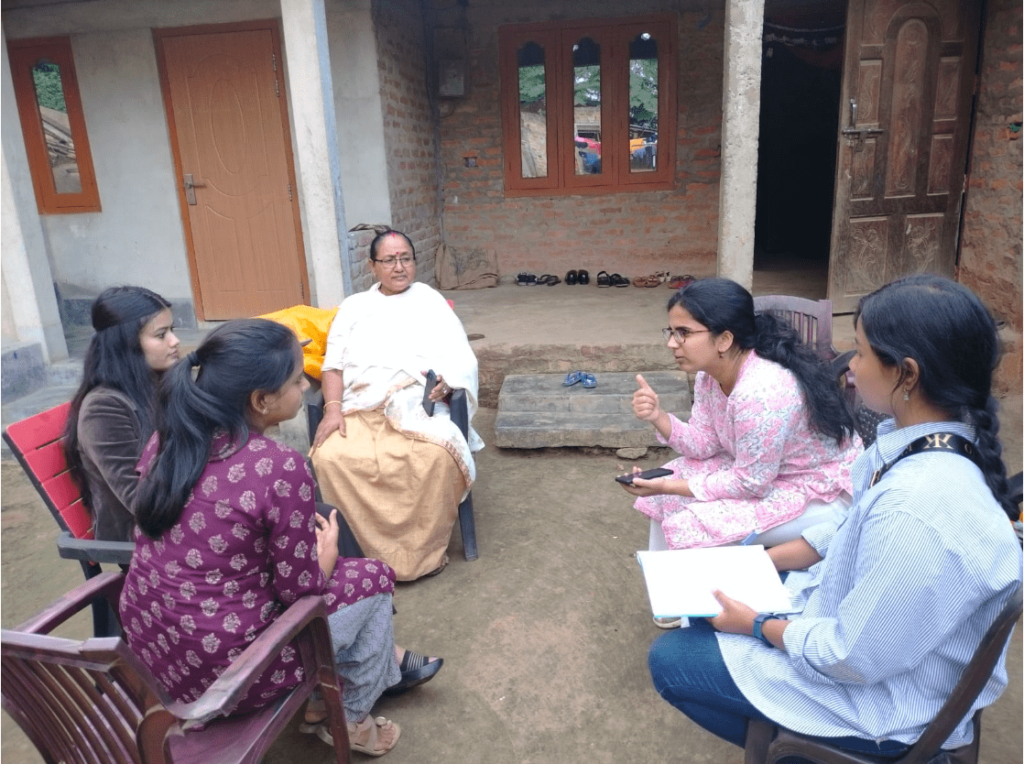Green Health Alliance
The power of data-driven analysis today has highlighted the causal chains between climate change effects and human health, and the picture is alarming. The 2022 Lancet Countdown Report shows a host of health effects of warming that range from heat related illness and mortality, to the spread of vector-borne and water-borne pathogens, to rising insecurity as food cropping patterns are changed. A report by Healthcare Without Harm offers an alternative perspective on the role of the medical sector in worsening climate change. It estimates that the healthcare sector is responsible for 4.4% of greenhouse emissions. There is a moral imperative for health professionals to act to mitigate global warming. This is why the Green Health Alliance was founded as a sector shaping alliance at the intersection of climate and health.
We are trying to move the needle on climate adaptation and mitigation in the health sector. In countries like India in the Global South, adaptation and mitigation go hand in hand, such that solarising a rural health facility can improve the resilience of a low-energy facility and a community in poor health in a climate-friendly way. We wanted to bridge the critical gap that existed for a holistic convening platform that could act as a cohesive force to forge benchmarks of excellence out of the varied strands of effort existing in this domain. Our alliance therefore couples vetted service and technology providers with health and climate knowledge experts to co-create model solutions that financiers and policy decision makers can adopt confidently.
Our alliance works on the problems of climate and health in a closed loop as shown below, with priority projects in each of three response areas.
Climate impact on people: Building resilience and capacity in frontline communities
Our priority project in this area is to improve maternal and newborn health by helping women who are pregnant in vulnerable communities adapt to climate change. Studies by the United Nations Population Fund estimate that a 1°C increase in average temperature before delivery increases the likelihood of a stillbirth by 6 percent. Heat-induced fetal stress, dehydration, poor nutrition, and anaemia worsened by climate change also harm the wellness of women who are new or expecting mothers. The indirect effects include an increase in male violence and the insecurity associated with increased exposure to extreme weather events and forced displacement. For these reasons, we propose two pillars of intervention: in the family or community, and maternity institutions, to improve the health of women and children in India, sustainably.
Our interventions include
- Sustainable cooling and other adaptive solutions for home use
- Best practice guidelines for women who are pregnant to cope with climate change
- Counselling and psychosocial support for new or expecting mothers through telecare with a climate lens
- Combining climate knowledge with quality improvement programming at maternity hospitals in diagnostics and care
- Prioritising health facilities with maternity or fetal units for climate proofing interventions to improve resilience and achieve net zero emissions
- Advocating for the inclusion of child and mother health as significant indicators in the design and reporting of national and regional policies to mitigate or adapt to climate change
People’s impact on health systems: Advocating people-centric mitigation and adaptation in health
Our priority project here is supporting participatory surveillance for heat-related illnesses and infectious disease. As global warming raises the prevalence of malaria, dengue and other vector diseases, we use data powered early warning systems built during the pandemic to engage exposed communities in mapping the spread of vectors. Improved accuracy in predicting hotspots can help control and treat infectious disease. The information exchanged can also ensure the active involvement of communities in developing health system responses. We aim to use this tool for other climate health stressors, including heat related illness, and to develop platforms for community members to share their experience of climate adaptation, and be heard by the authorities.
Health systems’ impact on the climate: Reducing the footprint of care facilities
Our priority project in this area focuses on the potential for improving care services in energy deficient areas by adopting sources of renewable energy. In a project granted by the Rockefeller Foundation we seek the correlations between the supply of sustainable infrastructure (such as for energy or water) and care service delivery, for child and maternal health in particular. We are working in certain districts of two states in northeastern India, Meghalaya and Assam, where the maternal mortality ratio is 209 and 266 per 100,000 live births respectively. We ask if sustainable practices in healthcare facilities can improve the quality of care; accelerate the gains in health outcomes for individuals and communities; or strengthen health systems at scale. We hope to use our findings to make positive impacts in the region by implementing sustainable solutions to the barriers to accessing quality healthcare, maternal and child care especially.
*This is an ongoing study and the findings have not been vetted and distilled at this stage.


We propose to use the findings to create a plan of action to prioritise the supply of sustainable energy and other solutions in the areas and communities kept behind in indicators of maternal and child health. We also want to partner with governments for this, for that would cover integral facilities including community health centres and district hospitals. Our engagement with public decision makers would also involve the creation of financial and policy instruments to enable a conducive environment for the uptake of green solutions in the private sector. A systemic approach to the problem would therefore enhance the market for ecologically sound solutions in healthcare. By creating local and larger awareness of the correlations of healthcare and climate change, it would extend health system resilience in the Third World.
We are currently focused on raising financial resources to form a core secretariat and to implement the projects outlined above. For this we estimate a budget of USD 3 million over 3 years.



















